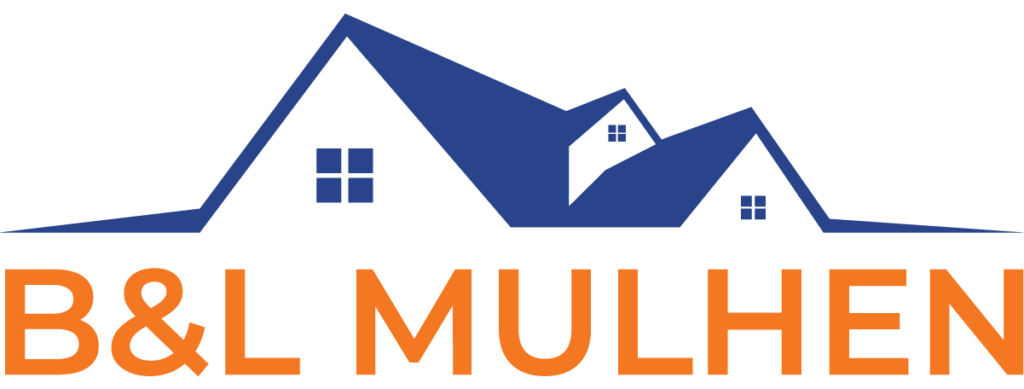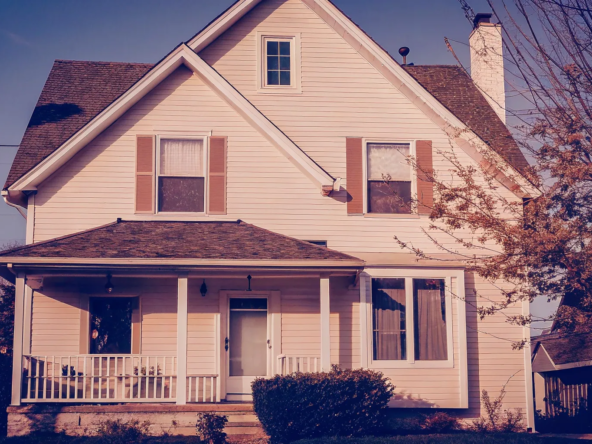The constant calls and letters from your lender can be overwhelming when you’re behind on your mortgage. Filing for Chapter 13 bankruptcy puts an immediate stop to all of it. The moment your case is filed, a legal protection called the “automatic stay” goes into effect, forcing your lender to halt the foreclosure process. This gives you the space to think clearly and plan your next steps. But this initial pause raises a crucial question: how long will Chapter 13 delay foreclosure? While the stay is immediate, long-term protection depends on your commitment to a repayment plan. We’ll explore how this works and what you need to do to keep your home safe for years to come.
Key Takeaways
- Filing for Chapter 13 Provides Immediate Protection: The moment your case is filed, a court-ordered “automatic stay” stops all foreclosure activity. This legal shield gives you immediate breathing room to create a long-term plan for your home.
- Success Hinges on a Dual Payment Commitment: To keep your home, you must make your regular mortgage payments on time and make a separate monthly payment to the bankruptcy trustee. Falling behind on either can put your home back at risk.
- Consider Faster, Simpler Alternatives: Chapter 13 is a multi-year legal process. Before committing, explore other solutions like a loan modification or selling your house for cash, which can resolve the issue quickly without the long-term oversight of a bankruptcy court.
What is Chapter 13 Bankruptcy?
Facing foreclosure is incredibly stressful, but you have options. Chapter 13 bankruptcy is one tool that can provide immediate relief and a path to keep your home. It’s a legal process designed to help you reorganize your finances and catch up on missed payments over time. Unlike what you might see in movies, it’s not about losing everything. Instead, it’s about creating a manageable plan to get back on track while under the court’s protection. This process allows you to keep your property as you work to become current on your debts.
A Simple Definition of Chapter 13
Think of Chapter 13 bankruptcy as a court-supervised repayment plan. It’s often called a “wage earner’s plan” because it’s for people with a regular income who can pay back some debt over three to five years. The main goal is to reorganize your finances without selling your assets. This means you can keep your house and car while you work through the repayment process. It’s a way to create a realistic strategy to handle your debts under the protection of the court and get back on solid ground.
Chapter 13 vs. Other Bankruptcy Types
When people think of bankruptcy, they often picture Chapter 7, which involves selling assets to pay debts. Chapter 13 is different, especially for your home. A Chapter 7 filing might only pause a foreclosure for a few weeks. In contrast, Chapter 13 is designed to stop a home foreclosure for good. It lets you roll past-due mortgage payments into your repayment plan, giving you several years to get current. This makes it a powerful option for homeowners who are determined to stay in their homes and need a long-term solution, not just a temporary delay.
Illinois Bankruptcy Guidelines to Know
If you’re considering Chapter 13 in Illinois, there are a couple of key requirements. First, you must have a regular source of income to show the court you can make consistent payments. You’ll also need enough disposable income—the money left after essential living expenses—to fund your repayment plan. Meeting these guidelines is the first step in a legal process that can last for years. It’s a significant commitment, so it’s important to understand what’s required before you start. This ensures you can successfully follow the plan and keep your home.
How Chapter 13 Immediately Stops Foreclosure
When you’re facing foreclosure, every day feels like a race against the clock. The good news is that filing for Chapter 13 bankruptcy provides an immediate and powerful tool to stop the process in its tracks. It’s not just a delay; it’s a legal command that forces your lenders to pause. This pause is called the “automatic stay,” and it’s one of the most significant benefits of filing for bankruptcy. It gives you the critical breathing room you need to regroup, create a repayment plan, and figure out your next steps without the immediate threat of losing your home. Let’s look at exactly how this protection works and how quickly you can get it.
How the “Automatic Stay” Works
Think of the automatic stay as a temporary shield that goes up the second you file for Chapter 13. This legal provision is a core part of bankruptcy basics and it automatically prohibits most creditors from continuing their collection efforts. For homeowners, this most importantly means it halts any foreclosure proceedings. The moment your case is filed, your lender is legally required to stop the foreclosure process, whether they’ve just sent a notice or are days away from an auction. This isn’t a request they can ignore; it’s a court-ordered injunction that provides immediate relief and gives you control over the situation.
How Quickly Does Protection Start?
The protection from the automatic stay is truly immediate. It takes effect the very moment your Chapter 13 bankruptcy petition is officially filed with the court. There’s no waiting period or approval process for the stay itself to begin. If a foreclosure sale is scheduled for tomorrow, filing your petition today will stop it. This speed is crucial for homeowners who are out of time and options. It provides an instant reprieve from the stress and pressure of an impending foreclosure. While this legal process offers a powerful pause button, it’s also helpful to know about other fast solutions, like understanding how it works to sell your home for cash.
What the Automatic Stay Covers
The automatic stay’s protection extends far beyond just stopping a foreclosure. It’s a comprehensive freeze on nearly all collection activities. This means creditors must also stop wage garnishments, lawsuits, and even those relentless phone calls and letters. This broad protection is designed to give you a complete break from creditor pressure so you can focus on creating a viable repayment plan. By halting all these actions at once, the automatic stay gives you the space to assess your finances without things getting worse. For many homeowners in Cook County, this pause is the first step toward finding a long-term financial solution.
Create Your Chapter 13 Repayment Plan
With the automatic stay in place, your next move is to create a repayment plan. This is the core of your Chapter 13 case—a detailed, three-to-five-year roadmap showing the court and your creditors how you’ll get back on track. It’s your formal proposal for catching up on past-due debts while keeping up with current bills. A realistic plan is key to successfully navigating the process and saving your home from foreclosure.
What to Include in Your Plan
Your repayment plan consolidates your debts into one monthly payment. This includes your missed mortgage payments, along with other obligations like car loans or credit card bills. The plan clearly states how much you will pay each month and how those funds will be distributed among your creditors. It’s a structured budget designed to help you cure your mortgage default over time while managing your other financial commitments. This approach provides a clear path forward for both you and your lenders.
How to Structure Mortgage Payments
It’s crucial to understand that your Chapter 13 plan involves two separate housing payments. First, you’ll make your plan payment to the trustee, which covers your mortgage arrears. Second, you must continue making your regular, current mortgage payments directly to your lender on time each month. Successfully managing both of these payments is the foundation of the agreement. As long as you stay current, you can stop the foreclosure of your home and keep it for the long term.
How to Handle Other Secured Debts
Chapter 13 also provides a way to manage other secured debts, such as car loans. Your repayment plan can reschedule these debts, spreading the payments over the full three-to-five-year term. This often results in a lower monthly payment for those items, which can free up much-needed cash in your budget. This flexibility makes it easier to afford your ongoing mortgage payments and your Chapter 13 plan contributions, creating a more stable financial picture overall.
Your Role with the Bankruptcy Trustee
The court will assign an impartial bankruptcy trustee to your case to ensure everything is handled correctly. You will send your single monthly plan payment directly to this trustee, who then distributes the money to your creditors as outlined in your plan. It’s important to act quickly, as you must start making these payments to the trustee within 30 days of filing your bankruptcy petition, even before the court gives its final approval.
How Long Does Chapter 13 Protection Last?
When you’re facing foreclosure, time is everything. You want to know exactly how long you have to get your finances in order. With Chapter 13 bankruptcy, the protection you get isn’t just a single event—it happens in stages. First, you get immediate relief the moment you file. After that, your long-term protection depends entirely on the repayment plan you create and your ability to stick with it. Think of it as an initial pause button, followed by a structured path forward that can last for several years. The exact timeline varies, but it’s designed to give you a realistic window to catch your breath and get back on track.
The Initial Protection Window
The second you file for Chapter 13 bankruptcy, a powerful legal tool called an “automatic stay” goes into effect. This is your immediate shield. The automatic stay is a court order that instantly stops most creditors, including your mortgage lender, from continuing with any collection activities. This means the foreclosure process comes to a halt. No more threatening letters, no more phone calls, and no more sale date looming over your head. This initial protection gives you the critical breathing room you need to work with the court and structure your repayment plan without the constant pressure from creditors.
Your Long-Term Protection Timeline
While the automatic stay provides immediate relief, your long-term protection comes from the Chapter 13 repayment plan. This is the core of the bankruptcy process, where you propose a plan to pay back your debts over a set period. These repayment plans typically last between three and five years. During this time, you’ll make a single, consolidated monthly payment to a bankruptcy trustee, who then distributes the funds to your creditors. This plan includes any missed mortgage payments, allowing you to gradually catch up on what you owe. As long as you follow the plan, the protection from foreclosure continues for the entire three-to-five-year period.
What Affects How Long Protection Lasts?
Your protection under Chapter 13 lasts only as long as you hold up your end of the deal. The key is making your agreed-upon plan payments on time, every single time. If you can consistently afford your regular mortgage payments plus the amount set by the Chapter 13 plan, foreclosure will be kept at bay. However, if you start missing payments, your lender can ask the court to lift the automatic stay and resume the foreclosure process. It’s a serious commitment, and if you’re worried about managing those payments for years, it’s worth knowing all your options. Sometimes, a different approach, like understanding how it works to sell your home for cash, can provide a cleaner break.
Illinois-Specific Timelines
Here in Illinois, the timelines for Chapter 13 align with the federal framework. When you file, you’ll have three to five years to pay back your past-due debts through your repayment plan. This includes not just your mortgage arrears but also other significant debts like overdue property taxes, which can be a major issue for homeowners in Cook County. Whether you’re trying to sell your house fast in Chicago, IL or stay in your home, understanding this timeline is crucial. The three-to-five-year window is the standard for creating a manageable repayment schedule under the protection of the court.
How to Keep Your Chapter 13 Protection
Filing for Chapter 13 bankruptcy gives you valuable breathing room, but keeping that protection requires you to follow the rules of your repayment plan. Think of it as a partnership with the court—you hold up your end of the deal, and the automatic stay continues to protect your home from foreclosure. Staying on track can feel like a lot to manage, but it’s entirely possible when you know what to focus on. The key is consistency and clear communication. If you stick to the plan and know what to do when challenges arise, you can successfully see the process through and keep your home.
Make Your Payments on Time
This is the most important rule of Chapter 13. You must start making your plan payments to the trustee within 30 days of filing your case, even if the court hasn’t officially approved your plan yet. Missing these payments, especially early on, is a red flag that can put your bankruptcy protection at risk and allow lenders to restart foreclosure proceedings. Set up reminders, automate payments if you can, and treat this payment as your top financial priority. It’s the foundation of your entire Chapter 13 case and the key to keeping your home safe.
What to Do if Your Finances Change
Life happens, and the court understands that. If a major, unexpected event like a serious illness or a job loss makes it impossible for you to finish your repayment plan, you aren’t necessarily out of options. You might be able to request a “hardship discharge.” This allows the court to forgive your remaining eligible debts even if you haven’t completed all the payments. This isn’t an automatic approval, but it provides a crucial safety net for those facing circumstances beyond their control. The first step is always to inform your attorney as soon as your financial situation changes.
Communicate with Your Trustee and Creditors
Staying silent when you have a problem is one of the worst things you can do during Chapter 13. Your bankruptcy attorney is your guide and advocate throughout this process. If you have questions about your payments, wonder if you can pay the plan off early, or are confused about any part of the process, reach out to them immediately. Maintaining an open line of communication with your attorney and trustee ensures that small issues don’t turn into major problems that could jeopardize your case. They can provide the guidance you need to complete your plan successfully.
Common Mistakes to Avoid
Two common mistakes can derail an otherwise successful Chapter 13 plan. First, don’t stop making payments just because you think you’re done. You must continue paying until the Chapter 13 Trustee officially notifies the court that your plan is complete. Second, always consult your attorney before making any significant financial decisions. This includes receiving a large sum of money like an inheritance or deciding you want to sell your house fast in Chicago to pay off the plan. Acting without legal advice can have serious consequences for your case.
Why You Might Lose Chapter 13 Protection
Filing for Chapter 13 bankruptcy provides immediate relief, but that protection isn’t guaranteed for the entire three-to-five-year plan. Keeping your home safe from foreclosure depends on you holding up your end of the agreement. If you can’t stick to the terms approved by the court, you risk losing the automatic stay that’s keeping creditors at bay. Understanding the potential pitfalls is the first step to avoiding them. Several things can jeopardize your case, from falling behind on payments to new financial hardships. Knowing what these challenges are and how to respond can make all the difference in successfully completing your plan and keeping your home.
The Consequences of a Missed Payment
Your repayment plan is the foundation of your Chapter 13 case. If you miss a payment to the trustee, it sends a red flag that you may not be able to fulfill the plan’s terms. The trustee will likely file a motion to dismiss your case. If the court agrees, the automatic stay is lifted, and your protection from foreclosure disappears immediately. Your lender can then pick up right where they left off. In some situations, the court might convert your case to a Chapter 7 instead of dismissing it. This is a serious consequence, as it changes how your assets are handled and could still put your home at risk.
Understanding “Relief from Stay”
Even if you’re making your plan payments to the trustee, you still have to make your regular mortgage payments on time. If you fall behind on these post-filing payments, your lender can ask the court for permission to proceed with foreclosure. This is done by filing a motion for “relief from stay.” If the judge grants their request, the automatic stay will no longer apply to your mortgage lender, and they can move forward with foreclosing on your property, even while your Chapter 13 case is still active. This is why it’s critical to prioritize your current mortgage payments as soon as you file.
Converting to Another Bankruptcy Type
Sometimes, life throws a curveball. A job loss or unexpected medical bills can make your approved Chapter 13 plan unaffordable. If your circumstances change significantly, you may have the option to convert your case to a Chapter 7 bankruptcy. This isn’t a decision to take lightly. Chapter 7 involves liquidating non-exempt assets to pay creditors, which could include your home if you have too much equity. While it can offer a faster path to discharging other debts, it provides less protection for homeowners who want to keep their property. It’s essential to discuss this with your attorney to understand the full implications.
Your Options if the Plan Fails
What if you’re near the end of your plan and something catastrophic happens that prevents you from making the final payments? If you can’t modify your plan and the failure to pay is due to circumstances beyond your control, you might qualify for a “hardship discharge.” This is not a common outcome, but it allows the court to discharge your debts even if you haven’t completed the plan. To be eligible, you typically must prove that your creditors have received at least as much as they would have in a Chapter 7 liquidation and that your situation is unlikely to improve.
Alternatives to Chapter 13 Bankruptcy
Filing for Chapter 13 bankruptcy is a significant decision, but it’s not your only path forward if you’re facing foreclosure. Depending on your financial situation and goals, several other options might be a better fit for you and your family. Exploring these alternatives can help you find a solution that offers peace of mind without the long-term commitment and credit implications of a bankruptcy plan. It’s about finding the right strategy to regain control of your finances.
Sell Your House Fast for Cash
One of the most direct ways to stop a foreclosure is to sell your house fast for cash. This approach allows you to resolve your mortgage debt quickly, often in a matter of days or weeks, completely avoiding the lengthy bankruptcy process. By selling for cash, you can pay off your lender and walk away without a foreclosure on your record, which can be a crucial step in protecting your credit score for the future. This option provides a clean break and immediate financial relief, letting you move forward without the weight of a mortgage you can no longer afford.
Work With a Cash Home Buyer
Engaging with a cash home buyer simplifies the selling process when time is critical. Companies that buy houses for cash, like us, typically purchase properties as-is. This means you don’t have to worry about spending money on costly repairs or preparing your home for showings. Our process is straightforward: we assess your property, make a fair cash offer, and can close on your timeline. For homeowners in areas like Cook County, this is a practical solution to prevent foreclosure and access your home’s equity without the usual hassles of a traditional sale.
Ask for a Loan Modification
If your goal is to stay in your home, requesting a loan modification from your lender is a strategic move worth considering. A modification permanently changes the terms of your original loan to make your monthly payments more manageable. This could involve lowering your interest rate, extending the loan term, or even reducing the principal balance. You’ll need to demonstrate financial hardship and show that you can meet the new payment terms. A successful loan modification can help you avoid foreclosure and bankruptcy altogether while allowing you to keep your home.
Consider a Short Sale
A short sale is another alternative where you sell your home for less than the total amount you owe on the mortgage. This option requires your lender’s approval, as they will be accepting a loss. While a short sale can still negatively impact your credit, the damage is generally less severe than a foreclosure. It’s a viable strategy if you’re “underwater” on your mortgage—meaning you owe more than the home is worth. A short sale allows you to get out from under a burdensome mortgage and avoid the foreclosure process, providing a path to a fresh financial start.
Related Articles
Frequently Asked Questions
Will I lose my house if I file for Chapter 13? No, the entire point of a Chapter 13 bankruptcy is to help you keep your house. It creates a structured repayment plan that allows you to catch up on your past-due mortgage payments over three to five years. As long as you continue to make your regular mortgage payments on time and also make your required plan payments to the trustee, your home will be protected from foreclosure.
How quickly does the foreclosure process actually stop? The foreclosure process stops the very moment your Chapter 13 petition is filed with the court. This legal protection, known as the “automatic stay,” is immediate and legally binding. If a foreclosure sale is scheduled for tomorrow, filing your case today will halt it, giving you instant breathing room to organize your finances under the court’s protection.
What happens if I lose my job and can’t make my Chapter 13 payments? If a major life event like a job loss makes your plan unaffordable, you aren’t out of options. You should contact your attorney right away to discuss your situation. They can help you explore modifying your plan, converting to a different type of bankruptcy, or in some specific cases, requesting a hardship discharge from the court. The most important thing is to act quickly and communicate the change in your circumstances.
Do I have to pay my mortgage lender and the court at the same time? Yes, and this is a critical part of a successful Chapter 13 plan. You are responsible for two separate payments. First, you must continue to make your regular, current mortgage payment directly to your lender each month. At the same time, you will make a separate payment to the bankruptcy trustee, which is used to catch up on the past-due amounts and other debts included in your plan.
Is Chapter 13 my only option to stop foreclosure if I’m out of time? Not at all. While Chapter 13 is a powerful legal tool, it’s a long-term commitment that isn’t the right fit for everyone. Another effective way to stop a foreclosure is to sell your property. Working with a cash home buyer can resolve the situation very quickly, often in just a week or two. This allows you to pay off your mortgage, avoid having a foreclosure on your record, and move forward without a multi-year, court-supervised plan.





